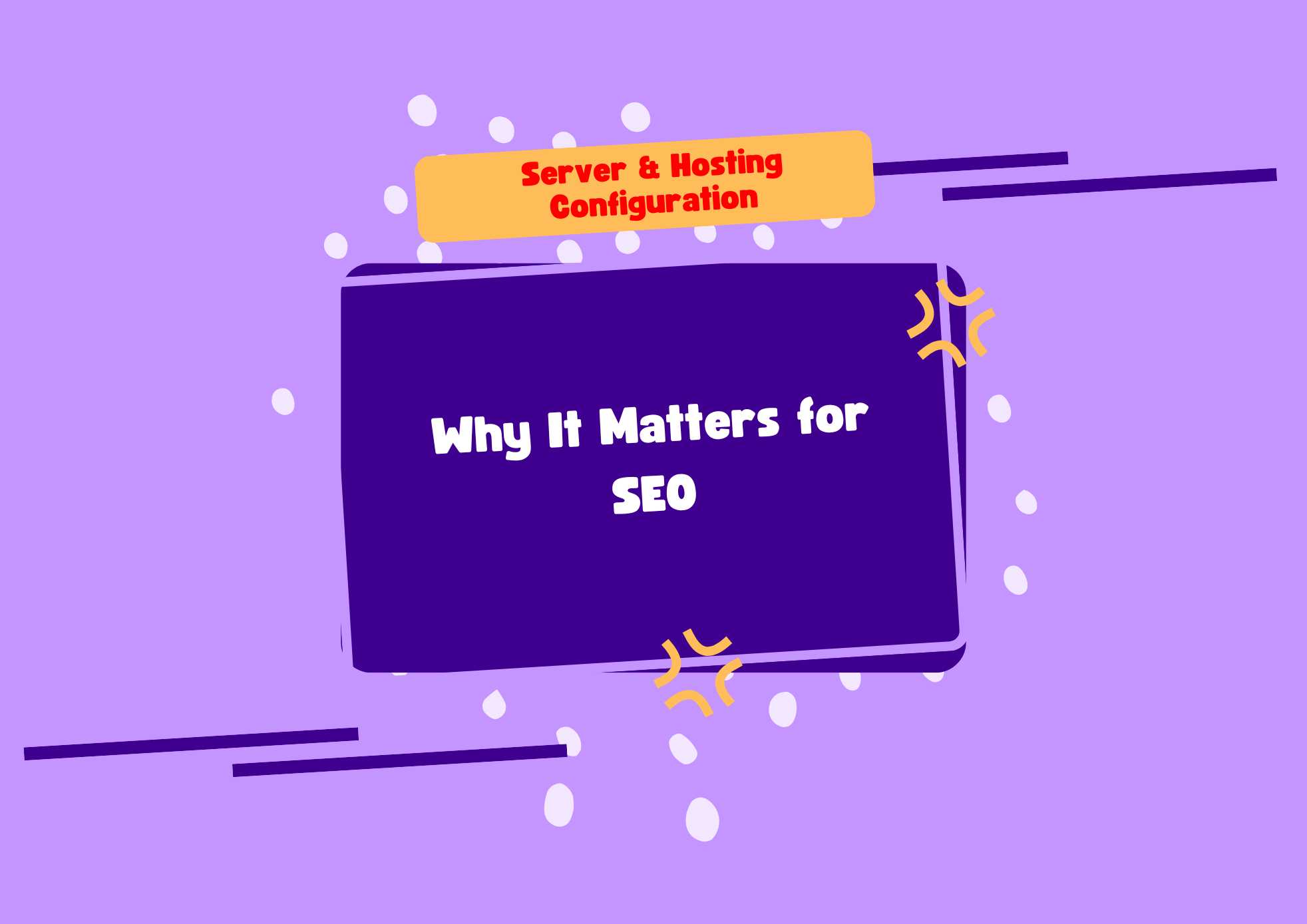When optimizing a website for search engines, most people focus on keywords, backlinks, and content. But one of the most overlooked aspects is server and hosting configuration. Google considers page speed, uptime, server response, IP location, and security protocols when crawling, indexing, and ranking a website.
In this article, we’ll break down:
- What server & hosting configuration includes
- Why it matters for SEO
- Best practices for webmasters
- Real-world examples
- Google’s official recommendations
What Is Server & Hosting Configuration?
Server and hosting configuration refers to how your web hosting environment is set up and optimized to serve your website to users and search engine crawlers. It includes:
- Server type and software (Apache, Nginx, LiteSpeed)
- Hosting type (Shared, VPS, Cloud, Dedicated)
- SSL/TLS certificates
- Server response time
- Caching
- CDN integration
- HTTP headers
- Geographic server location
- Downtime/uptime ratios
Why Hosting Configuration Matters for SEO
Google’s crawler bots are automated and scan websites across the internet to determine how well a site should rank. If your hosting is poorly configured, it can negatively affect:
| Factor | SEO Impact |
|---|---|
| Page speed | Google uses it as a ranking signal (Google Page Experience) |
| Downtime | A site that’s frequently offline may lose rankings |
| Slow server response | Can lead to crawl budget issues, especially for large websites |
| No SSL | Sites without HTTPS are labeled “Not Secure” and may lose trust and rankings |
| Incorrect redirects | Poorly configured redirects can cause indexing problems |
| Location mismatch | Hosting your site far from your audience can affect loading times and localization signals |
SEO Best Practices for Server & Hosting Configuration
1. Use a Fast & Reliable Hosting Provider
Choose providers with:
- 99.99% uptime guarantees
- SSD storage
- Global CDN integration
- Server-side caching (e.g., LiteSpeed Cache)
Example: A business site hosted on a shared server with 300+ other sites might respond in 2.5s. The same site on a cloud VPS can respond under 700ms.
2. Enable HTTPS with a Valid SSL Certificate
Google officially states HTTPS is a ranking signal. All sites must migrate from HTTP to HTTPS.
Use Let’s Encrypt (free) or a premium SSL with your host. Check SSL using:
arduinoCopyEdithttps://yourdomain.com → should show 🔒 Secure
Google: Secure Your Site with HTTPS
3. Set Proper HTTP Status Codes and Redirects
Use:
301for permanent redirects302only for temporary cases404for missing pages (avoid soft 404s)
4. Improve Server Response Time
Google recommends keeping Time To First Byte (TTFB) under 200ms.
Use tools like:
- Google PageSpeed Insights
- WebPageTest.org
- Chrome DevTools (Network tab)
5. Implement GZIP Compression and Browser Caching
These reduce file sizes and speed up repeat visits. Configure via .htaccess or Nginx config:
apacheCopyEditAddOutputFilterByType DEFLATE text/html text/css application/javascript
Google: Reduce Server Response Time
6. Use a Content Delivery Network (CDN)
A CDN stores cached copies of your site in servers around the world, reducing latency.
Google itself uses CDNs to deliver fast content globally.
Recommended: Cloudflare, BunnyCDN, Akamai
7. Geo-Targeting and IP Location
Google considers server location as a signal for local SEO. If your audience is in Pakistan, consider hosting in South Asia or using a CDN with edge servers in the region.
Google: Multiregional and Multilingual Sites
8. Minimize Downtime
Use uptime monitoring tools (UptimeRobot, Pingdom). Googlebot may devalue your site if it frequently returns 5xx errors.
Real-World Example
A Pakistani e-commerce site hosted on a cheap shared server was:
- Loading in 5.4 seconds
- Getting crawl budget issues
- Showing 500 errors intermittently
After switching to a managed VPS + Cloudflare:
- Load time dropped to 1.2 seconds
- Pages indexed increased by 43%
- Bounce rate dropped by 18%
Final Checklist for SEO-Friendly Hosting
✅ 99.99% Uptime
✅ Server TTFB < 200ms
✅ HTTPS with valid SSL
✅ GZIP + browser caching
✅ Proper 301/404/503 codes
✅ Local or CDN-enhanced hosting
✅ Weekly downtime monitoring
✅ Fast DNS resolution



